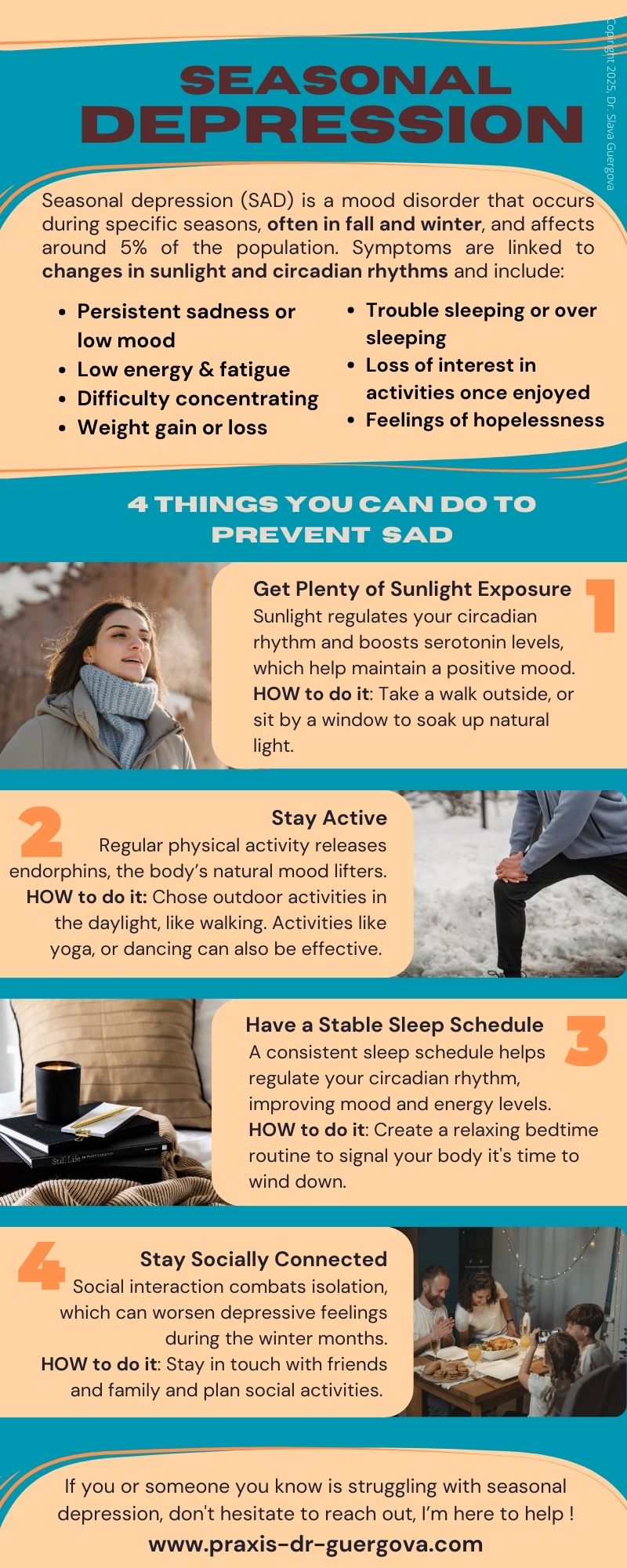Seasonal Depression
As the days grow shorter and the weather gets colder, many people experience a shift in their mood and energy levels. For some, this change can lead to feelings of sadness, fatigue, and isolation—symptoms commonly associated with Seasonal Affective Disorder (SAD). This type of depression typically occurs during the fall and winter months, when reduced sunlight can disrupt our body’s natural rhythms. If you’ve noticed yourself feeling down or unmotivated during the colder months, you’re not alone.
While it may feel like the winter blues are inevitable, the good news is that SAD doesn’t have to take control of your life. With the right strategies, you can actively prevent and manage its impact. By making simple adjustments to your daily routine—such as increasing exposure to natural light, staying active, and prioritizing good sleep—you can help regulate your mood and energy throughout the colder months. Taking proactive steps early in the season can make a significant difference, allowing you to maintain a positive outlook, stay connected with others, and feel more energized.
While lifestyle changes and self-care practices are effective in managing the symptoms of SAD, psychotherapy can play a crucial role in providing deeper support. Cognitive Behavioral Therapy (CBT), a common approach for SAD, helps individuals identify and challenge negative thought patterns and behaviors that may worsen feelings of depression. Through therapy, you can gain valuable coping strategies to manage stress, improve your mood, and develop healthier ways of thinking during the challenging winter months. In some cases, working with a mental health professional can provide relief when self-care alone isn’t enough, offering a safe space to explore emotions, build resilience, and prevent the recurrence of symptoms.
Download my infographic on seasonal depression and don’t let winter blues take over—try these steps today and seek professional support if you need it!


